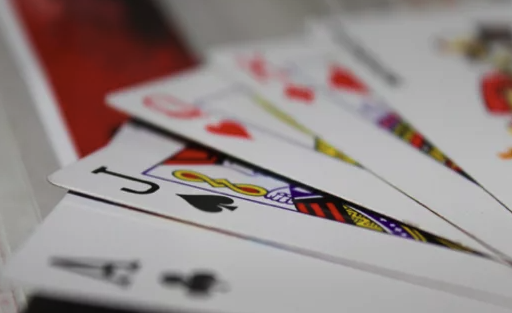Glossary Term
Rebuy
Rebuy
Used In: Poker
Introduction
In poker, a rebuy is the option to buy more chips after a player loses their stack. This rule only applies in certain types of tournaments, usually during the early stages. The goal is to give players a second chance without knocking them out right away. It adds a layer of strategy, since players can take more risks knowing they can rebuy.
Rebuy tournaments have a set period when rebuys are allowed. Once that window closes, the game becomes a standard freezeout—if a player runs out of chips, they're out. Some tournaments also include an add-on, which lets players buy extra chips once, often at the end of the rebuy period. These features can increase the prize pool and change how players approach the early stages of the game.
Rebuy options affect both strategy and psychology. Some players take aggressive lines early, knowing they can rebuy if needed. Others stay cautious to avoid extra costs. Understanding how and when to rebuy can give players a real edge, especially in games with loose opponents and deep starting stacks.
In Depth Look
Rake is essentially the house’s commission for facilitating poker games, and it plays a critical role in the economics of both live and online poker rooms. The most common method of collecting rake in cash games is taking a percentage of the pot—often between 2.5% and 10%—once the pot reaches a minimum size. To prevent excessive fees, many venues cap the rake at a maximum amount per pot, which varies depending on the stakes. This system ensures the house earns revenue while keeping the game fair and attractive to players. In some cases, especially in live games, rake might also be collected as a time-based fee per player per hour, known as a “time rake,” rather than from each pot.
The rake structure can vary widely across different poker rooms and formats, affecting the overall cost of playing. Tournament rake is generally embedded in the buy-in—players pay a higher upfront fee that includes the prize pool contribution plus the house fee. Online poker sites often have flexible rake systems, sometimes offering promotions or reduced rake to attract players. Understanding these differences is important because higher rake rates can significantly reduce player winnings, especially in lower-stakes games where pots tend to be smaller. Players who frequently play in high-rake environments must adjust their strategies accordingly to maintain profitability.
From a player’s perspective, rake is one of the biggest obstacles to consistent winning. Even highly skilled players face challenges overcoming the built-in cost of rake, which acts like a tax on every hand played. To offset this, players need to focus on making profitable decisions that can outweigh the fees, often requiring tight bankroll management and careful game selection. In some cases, players seek out games with lower rake or rakeback promotions to improve their expected value. Ultimately, a clear understanding of how rake works—and how it affects expected returns—is essential for anyone serious about poker as a long-term endeavor.
Mechanics
In poker, a rebuy allows a player to purchase more chips after losing all or most of their stack, but only during a set time in certain tournaments. This structure creates a dynamic early phase where players can play more aggressively, knowing they have a safety net. Rebuys usually cost the same as the original buy-in and provide the same number of chips. Some players treat the rebuy period as a chance to build a big stack quickly, while others take a conservative approach to avoid spending more money.
Once the rebuy period ends, the tournament shifts to a freezeout format—if a player busts, they’re out. Some events also offer an add-on, which is a one-time chip purchase available at the end of the rebuy period, regardless of a player’s current stack size. These formats often lead to larger prize pools and more varied strategies. Players must weigh the value of staying in the game against the extra cost and decide how much risk they’re willing to take early on.
Key points:
- Rebuys are only allowed during a specific time frame in certain tournaments.
- Players can use rebuys to play aggressively or build a deeper stack.
- Add-ons give players one last chance to boost their chips before freezeout play begins.


Illustrated Example
In a $10 rebuy poker tournament, each player starts with 1,500 chips. During the first hour, rebuys are allowed any time a player has 1,500 chips or fewer. After that hour, the tournament becomes a freezeout. There's also a one-time $10 add-on option at the break, which gives players an extra 2,000 chips, regardless of their current stack.
Let’s say a player named Mark starts the tournament and loses all his chips after 15 minutes. He immediately rebuy for $10 and gets 1,500 more chips. Forty minutes in, he busts again and does another rebuy. At the one-hour break, he still has chips and chooses to do the add-on. In total, he has spent $40 and holds 2,500 chips heading into the freezeout phase.
| Action | Time | Chips Received | Total Spent | Current Stack |
|---|---|---|---|---|
| Initial Buy-in | 0 min | 1,500 | $10 | 1,500 |
| 1st Rebuy | 15 min | 1,500 | $20 | 1,500 |
| 2nd Rebuy | 40 min | 1,500 | $30 | 1,500 |
| Add-on | 60 min (break) | 2,000 | $40 | 2,500 |
Player Perspective
From a player’s perspective, the rebuy option offers both opportunity and risk. It gives them a second chance if things go wrong early, which can be reassuring—especially in fast, aggressive games. Some players use the rebuy period to take more chances, aiming to build a big stack while others play cautiously. Knowing you can rebuy reduces the pressure to play perfectly from the start, which can change how hands are played and how opponents are read.
At the same time, rebuys can become a trap if not managed well. Players may chase losses and keep buying back in without a clear plan, quickly spending more than they intended. The key is to set limits in advance and treat each rebuy as a strategic decision, not an emotional reaction. A smart player sees the rebuy not just as a lifeline, but as a tool to use with purpose.
Conclusion
Rebuys add a unique layer of strategy to tournament poker. They give players a second chance after losing their stack, which can lead to more aggressive play early on. This changes the rhythm of the game and forces players to think beyond a single buy-in. For some, it’s an opportunity to take calculated risks and build a strong position before the freezeout phase begins. For others, it’s a safety net that helps reduce the pressure of early mistakes.
But the rebuy option also requires discipline. Without a clear plan or spending limit, it’s easy to chase losses and fall into a pattern of emotional decision-making. Successful players treat each rebuy as an investment—not just a reaction to a bad beat. They understand the value of chip accumulation and weigh that against the rising cost of staying in the game. In the end, rebuys are a powerful tool, but only when used with purpose and control.
The Top Online Casinos for Playing Poker
These platforms prioritize player satisfaction by providing intuitive interfaces, seamless gameplay experiences, and robust security measures to ensure a fair and enjoyable environment for all users.


Author
Branimir Ivanov | Senior News Contributor







